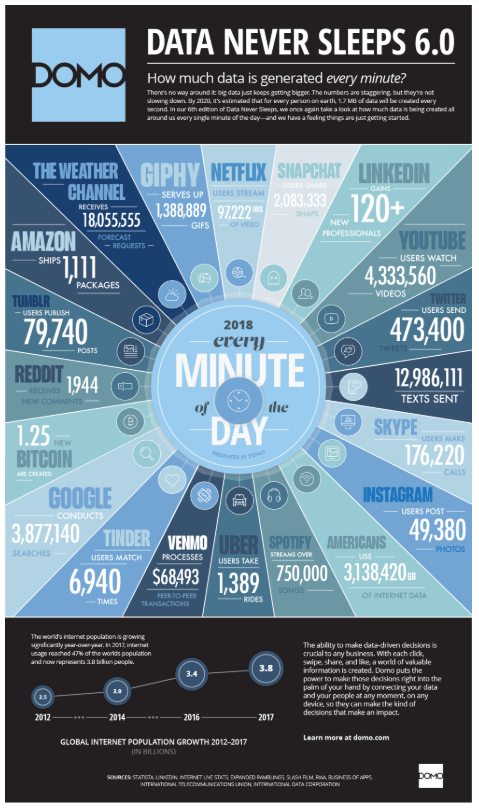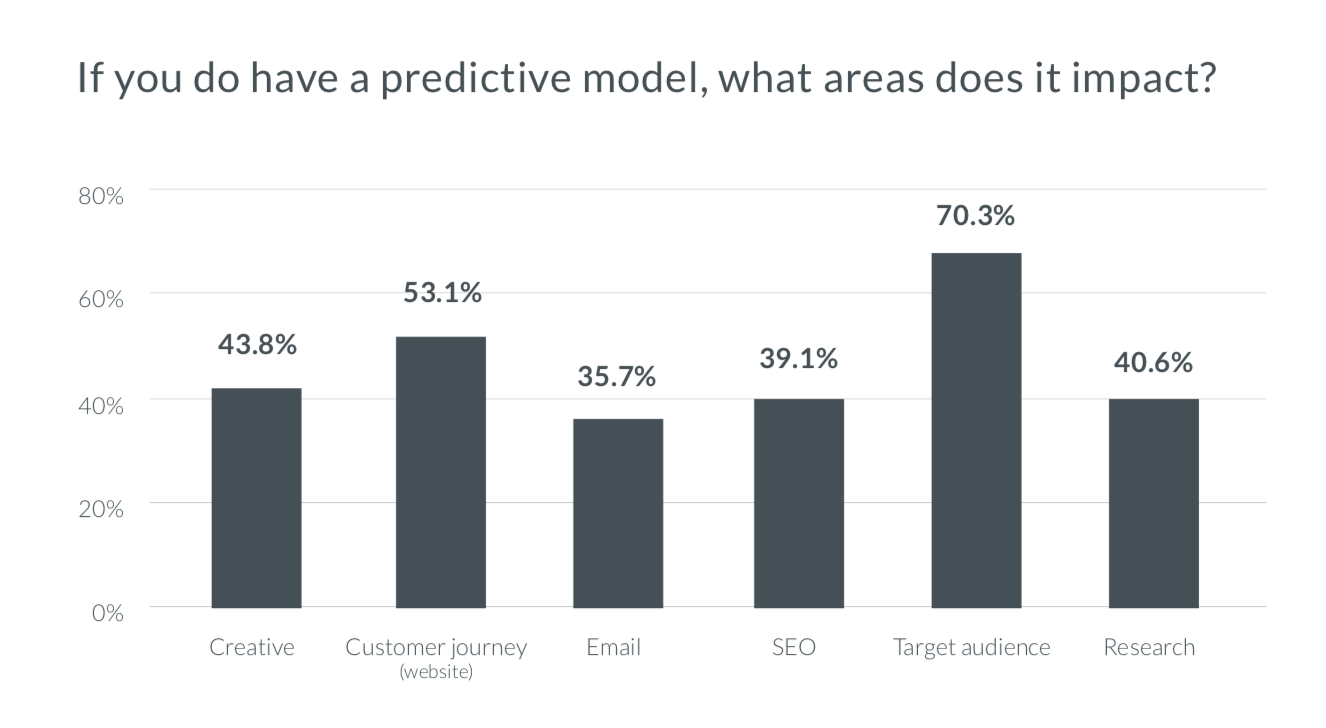We live in a world where every blog post click, social media like, and search engine query create just a little more data in a sea that’s quickly rising.
According to Domo’s most recent rendition of “Data Never Sleeps,” this much data is created every minute of every day:
It’s no wonder that many brands are feeling overwhelmed by it all.
While marketers agree that driving business growth is their top challenge, they also will tell you that demonstrating that financial impact to their C-Suites is their top communication challenge. And even among marketers who are able to demonstrate their financial impact, often it entails retroactive — rather than predictive — analysis.
In a recent survey we conducted with Keen Decision Systems, we asked marketers, “how accurate is your decision making in driving improved business / sales results?”
Nearly half of survey respondents (45.4%) said it’s “useful, but not predictive.”
“Analysis paralysis” refers to the phenomenon of using data to second-guess the past, rather than to predict what will work in the future.
Predictive modeling offers a solution to analysis paralysis by giving brands a unified view of campaigns across marketing channels and offering marketers the opportunity to make real-time adjustments to those campaigns. Decisions can be based on moment-to-moment insights that improve audience targeting, provide connected insights into the buyer journey, and ultimately boost campaign performance.
Content produced in collaboration with Keen Decision Systems.
What is predictive modeling?
All too often, marketers and finance teams use the vast quantities of data they’re collecting to focus on past performance, rather than leaning on that data for a glimpse into what might happen in the future. Think about the number of spreadsheets related to performance you’ve used in the past year, month, or even week to justify marketing decisions. Chances are, the number is in the double digits with the year not even half finished.
Marketing is measured using many different KPIs, such as cost per acquisition (CPA) and click-through rates (CTR). But these metrics generally are reduced to a list of results, rather than based on variables that can be changed, such as time of day, creative, or device.
The ability to modify inputs to focus on variable metrics allows brands to better analyze the customer journey, in order to predict which media-channel investments and creative will be most successful in the future.
Connecting these variable, real-time metrics is the essence of predictive modeling.
How can predictive modeling can improve your brand’s performance? (Examples)
In our survey, we looked at the top aims of predictive modeling in marketing.
Survey respondents reported “target audience,” “customer journey,” and “creative” as the top three, respectively.
1. Improved audience targeting
Unfortunately, much of our current method of audience targeting relies on guesswork.
Brands craft messages based on their intended audiences, then shoot that messaging out into the world hoping that it finds the right customer in the right place at the right time.
Predictive modeling enables marketers to connect the dots between who is seeing their message and who is buying their product, meaning future messaging can be targeted specifically to actual buyers, rather than intended audiences.
According to a recent study by ClickZ in partnership with Keen, 70% of marketers say that predictive modeling positively impacts their understanding of target audience.
2. Better insight into the customer journey
Predictive modeling also has an impact on better understanding the customer journey. Outdated last-click attribution methods only show marketers the last interaction a customer has with the brand before purchase, which gives a shortsighted view of the path to purchase and could lead to wasted marketing spend on channels that don’t convert.
Connecting the dots to see every interaction between buyer and brand before purchase using advanced analytics, improved attribution processes, and technology gives brands a more holistic understanding of the ways customers move through the process of deciding to make a purchase.
Predictive modeling provides real-time access to customer journey insights, so marketers can apply those insights as they come, rather than waiting to pivot in their next campaign.
3. A boost for creative performance
A/B testing has been around for a very long time, but the arduous process used to take months, if not years. Now, dynamic creative optimization (DCO) means that most brands have hundreds of pieces of creative running in digital formats at any given time. It can be difficult to understand what’s working (and what’s not) in a campaign without predictive modeling to offer a unified view of how all channels are performing and interacting to drive sales.
Using a unifying, predictive system, marketers can begin to optimize creative based on campaign-level insights and ongoing sales data.
Indeed, 43% of survey respondents said that creative was the third greatest area of impact for predictive modeling.
Looking to learn more about predictive modeling?
For more information about how predictive modeling can help give a clear picture of all your data, download ClickZ and Keen’s report “The what, why, and how of predictive modeling — Do you really need another piece of martech?”


